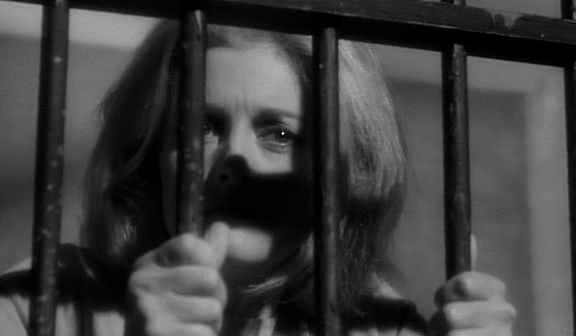The
Naked Kiss might not fall into the
category of the women’s prison film per se. There are merely a series of scenes
in which the female protagonist Kelly (Constance Towers) is locked up in a
county jail.
The scene is an unforgettable
one: it almost offers a summary of
the film. Outside of her cell, Kelly spots a little girl whose testimony is
crucial to her case. In an almost dream-like state (recalling the traumatic
incidences in "solitary" of other Women's Prison Films) she calls out
to the girl, frightening her away.
See how Towers’ face, through
the bars, goes from a mouth-less speechlessness - an iron mask of sorts - to
something that resembles a human skull.
What, in the end, is the
definition of a women’s prison film? How many scenes of this film must be set
in prison? How many women must it contain?
Must there even be a prison,
and if so, how visible must this prison be?
(There must certainly be a
woman.)
To me, The Naked Kiss is a women’s prison film for this scene alone. But there
is also the rest of the film, in which Kelly, a former prostitute, struggles to
live a "normal", “good” life. The jail scenes are a cynical metaphor
for Kelly’s overall plight – the ever-inescapable past, the very distillation
of existentialist Film noir.




No comments:
Post a Comment